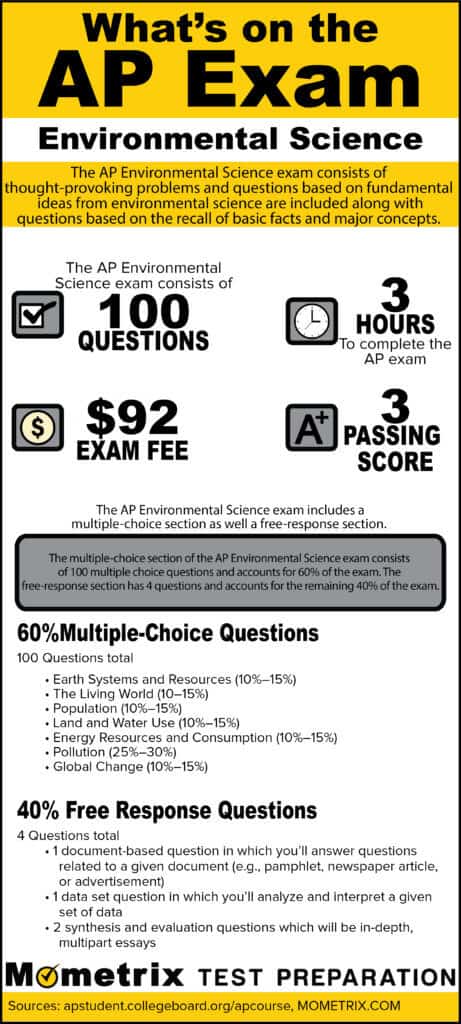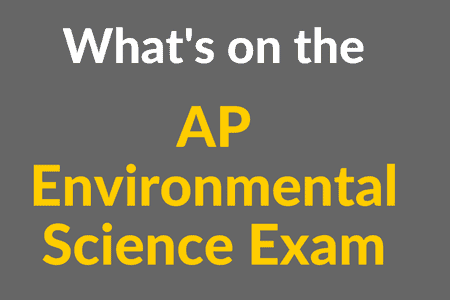AP tests are exams designed to measure a person’s grasp of a particular subject area. Passing one of these exams certifies that you have achieved a level of learning commensurate with that of a student who has passed college classes on the subject. If you’re in high school and are preparing for college, Advanced Placement (AP) courses are a great way to go with earning college credit while still being in high school.
If you’re in high school and are preparing for college, Advanced Placement (AP) courses are a great way to go with earning college credit while still being in high school.
The AP Environmental Science exam covers the thought-provoking problems and questions based on fundamental ideas from environmental science which are included with questions based on the recall of basic facts and major concepts. The AP Environmental Science exam consists of 100 questions and takes 3 hours to complete. Students who wish to take the AP exam should expect to pay a $92 fee and must score a 3 on the exam to be considered as passing. Scores on the AP exam range from 1 to 5 with 5 being the highest score.

The AP Environmental Science exam consists of 100 multiple-choice questions that account for 60% of the exam. The questions on the multiple-choice section require the test-taker to understand:

• Earth Systems and Resources
• The Living World
• Population
• Land and Water Use
• Energy Resources and Consumption
• Pollution
• Global Change
The AP Environmental Science exam also includes a free-response section with 4 questions that account for the other 40% of the exam score. One question is a document-based question in which you’ll answer questions related to a given document such as a pamphlet, newspaper article, or advertisement. One question is a data set question in which you will analyze and interpret a given set of data. The other two questions involve synthesis and evaluation questions which will be in-depth, multipart essays.

